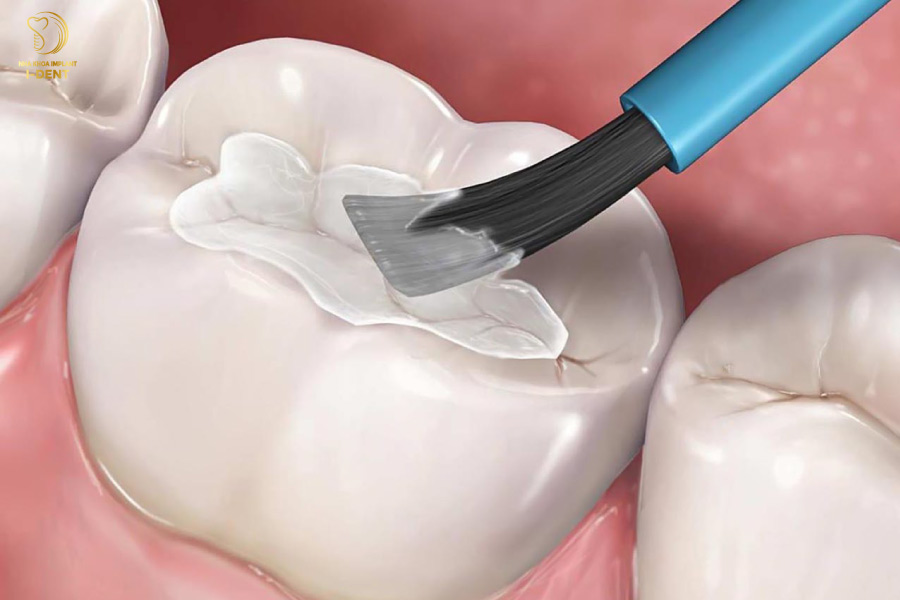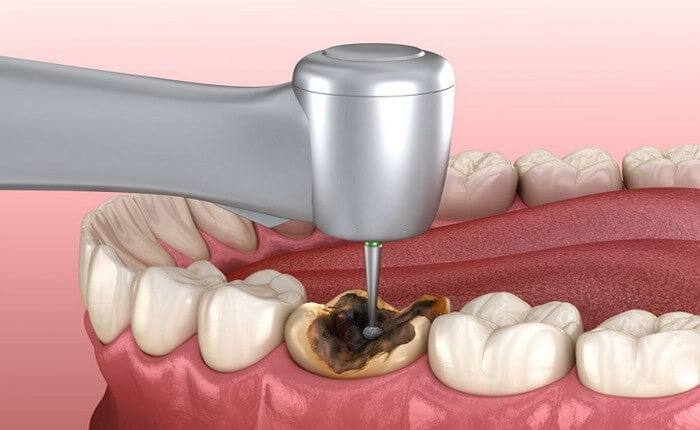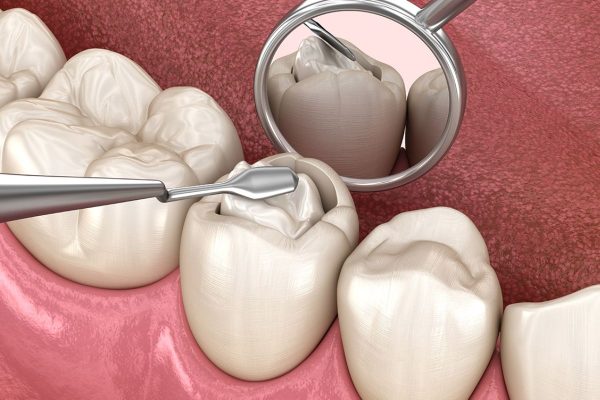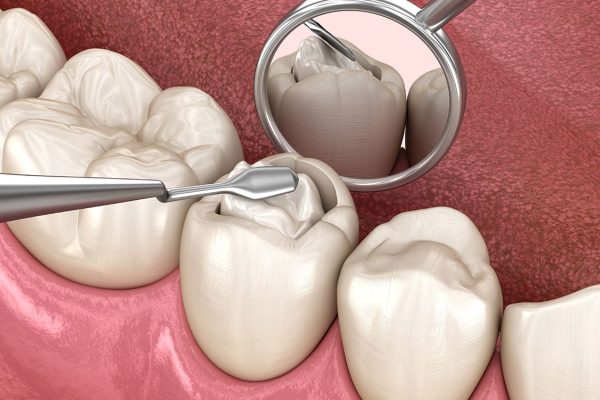Dental fillings are a popular method of restoring damaged teeth in dentistry. Dental fillings use dental material to fill cavities when the cavities are small or just starting to decay. So is tooth filling painful?
1. What is a dental filling?

Tooth filling is a very common and relatively simple technique in dentistry. Dental fillings help patients restore teeth to almost their original shape after decay or chipping. Normally, the materials used in tooth filling methods are Composite Materials, Amalgam, gold, silver, copper… to restore teeth with small cavities or chips.
Currently, the most commonly used dental filling material is composite material. This material, according to experts, has properties similar to real tooth tissue, moreover, this material is almost non-irritating to the body.
With the tooth filling method, the dentist will clean the damaged tooth area, then add material to the position that needs filling and then seal it, restoring the tooth’s original shape, helping to ensure chewing function. , while narrowing the damaged tooth area.
2. What cases require tooth filling?

Before finding out whether tooth decay is painful, we need to know which specific cases require dental filling techniques to treat. In fact, although tooth filling is a simple technique, not all tooth decay patients can apply it. Whether teeth can be filled or not depends on each person’s specific dental condition. Accordingly, dental fillings are often prescribed for the following cases:
2.1. Caries
Tooth decay is an extremely common dental disease, mainly caused by bacteria. Improper oral care and hygiene prevents food scraps from being completely removed, creating conditions for bacteria to grow and attack teeth. Over time, tooth enamel will be eroded and damaged. The tooth surface has cavities of different sizes.
At this time, the doctor will prescribe a dental filling method to help seal these cavities, narrow the damaged tooth area and prevent this cavities from spreading to other healthy tooth tissues.
2.2. Tooth trauma
In some cases, unwanted accidents occur causing teeth to be broken or chipped. If left untreated, it will greatly affect the patient’s ability to eat and chew. Chipped front teeth also cause loss of aesthetics for patients, making them lose confidence in daily life. At this time, using specialized dental filling materials to help teeth restore their original shape is an urgent need.
However, for teeth that are too severely traumatized, leading to large chips, exceeding 1/3 of the tooth crown, the tooth filling method will be difficult to perform. Because the filling is too large, it not only does not ensure aesthetics but is also easy to peel off.
2.3. Tooth root erosion
Bad habits in daily oral care and hygiene such as using a toothbrush with bristles that are too hard, brushing too hard, brushing horizontally for a long time will cause tooth enamel to wear out. , leading to tooth root erosion. A sign of this condition is the appearance of a wedge-shaped defect in the neck of the tooth at the junction between the tooth and the gum. To overcome tooth root erosion, the doctor will use composite materials to fill the worn area.
Note, the tooth filling method is only performed when the defect on the tooth is still shallow. For defects that have penetrated deeply into the tooth structure and affected the dental pulp, tooth filling cannot be performed.
2.4. Sparse teeth
In case the patient has gapped teeth, especially gaps in the front teeth, filling materials can still be used to fill them. However, the tooth filling method only applies to cases where the gap between teeth is small, specifically no more than 2 mm.
3. Is tooth filling painful?

It can be seen that in dentistry, tooth filling is not a very difficult or complicated technique, the tooth filling process is relatively easy and quick. Depending on the patient’s tooth condition, the dental filling method will interfere more or less with the damaged tooth position.
For patients with cosmetic dental fillings for sparse teeth, sparse teeth or small chipped teeth, the doctor only cleans the tooth area that needs treatment, then applies the filling material and that’s it. The tooth filling process takes place very quickly, the patient feels absolutely no pain or discomfort during the procedure and even after the procedure is completed.
In case the patient has severe tooth decay or a large chipped tooth affecting the tooth pulp. At this time, the doctor needs to conduct root canal treatment first and then perform tooth filling techniques with specialized materials. During root canal treatment, the patient will feel a little stinging and sensitive, but the doctor injected anesthetic before treatment so the pain is not too uncomfortable.
In fact, whether tooth filling is painful or not depends on the skill of the doctor as well as the machinery and treatment technology at the dentist. A highly experienced and highly qualified therapist can not only control and minimize pain (which often happens to people with sensitive bodies) but can also create a healing patch. . Good fillings have the ability to adhere tightly to teeth, ensuring patients both aesthetics and chewing function. If you choose the right quality dental clinic, tooth filling will be completely painless.
On the contrary, although the technique of cosmetic tooth filling is quite easy, if the treatment process takes place at a poor quality dentistry, or the doctor makes a mistake… complications such as pain and bleeding can still occur. Heavy bleeding, affecting neighboring teeth…
Fillings hurt? Similar to the tooth filling process, the level of pain after filling also depends on the same factors as above. If the tooth has decay or the enamel is worn and wants to be filled, you will first have to scrape the decayed tooth tissue. At that time, you will be anesthetized so you will not feel any pain. Inserting filling material into the sinus itself does not cause tooth pain. However, after the anesthetic wears off, you may feel a little sensitive but not significant. If necessary, pain relievers can be used.
In addition, after filling, because the filling hardens, it tends to shrink, causing the size of the filling to shrink, creating a gap between the tooth and the filling. When chewing, the chewing force will cause pore pressure to change, leading to an impact on the dentinal tubules, then transmitted to the tooth pulp and making the person filling the tooth feel sensitive. Therefore, whether tooth filling is painful or not depends almost entirely on the skill of the doctor and the quality of materials used.
In general, not all dental fillings are safe and do not cause discomfort. Sensitivity still exists but only in certain special situations. However, don’t worry too much, this feeling of discomfort (if any) can completely be controlled and overcome and is within our ability to endure.


 Tiếng Việt
Tiếng Việt







